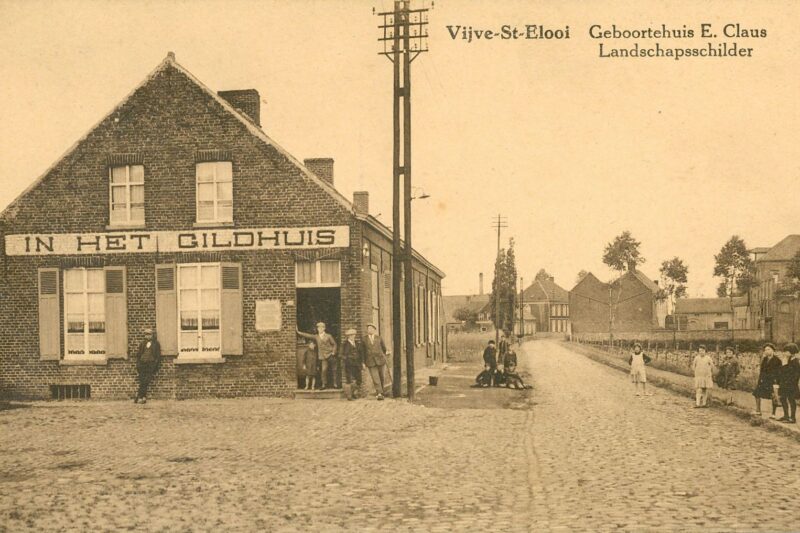Biography
Emile Claus was born on 27 September 1849 in Sint-Eloois-Vijve, near the River Lys, the son of Alexander Claus and Celestine Verbauwhede. His father was an innkeeper and initially saw little prospect of a career as an artist for his son Emile.
It is only at the age of 20 that Emile begins his artistic training at the Royal Academy of Fine Arts in Antwerp. There, he is a pupil of landscape painter Jacob Jabobs and Nicaise De Keyser, among others. The latter’s studio allowed him to work as an assistant from June 1874, and so he was increasingly in demand as a teacher to give drawing lessons to the Antwerp bourgeoisie. In his early career, he is strongly influenced by traditional Flemish painting. Impressed by the canvases that contemporary artist Charles Verlat brought back from North Africa, Claus also decided to take an orientalist trip. At the age of 29, he traversed Spain, Morocco and Algeria. Claus’ letters show his great enthusiasm for this new, fascinating world. From the early 1880s, he broadens his contacts and gets an individual exhibition in Brussels. In 1882, he scored his first success with the canvas Cockfight in Flanders, which was exhibited at the Paris Salon.
From then on, Astene pops up as his residence in the catalogues.
The attraction of the river Lys is no longer absent from his oeuvre. In 1883, he settled permanently in Astene, in Villa Zonneschijn.He would live there until the end of his life with his wife Charlotte Dufaux, a daughter from a prominent dynasty of notaries from Waregem and Deinze, whom he married on 4 May 1886.A large window in the living room there offers a grandiose view of the meandering Lys and its banks.The artist is primarily attracted to the landscape, but the house also becomes a meeting place for friends Cyriel Buysse, Henri Le Sidaner, Charles Van der Stappen and the writer Camille Lemonnier.nfight in Flanders, exhibited at the Paris Salon.
Influenced by the latter and fascinated by Monet’s impressionist canvases that he met in Paris, Claus changed his style away from naturalistic realism to his own style in which light predominates, luminism.
The monumental canvas Beet Harvest can be situated as a pivotal work between the two periods. In 1904, he founded the Circle ‘Vie et Lumière’.Only a few months after its foundation, the circle was considered the official representative of impressionism in Belgium.Over the years, Claus increasingly manifested himself as a leader of the Luminist movement in Belgium.This is how he became known as the ‘sun painter’. The uniqueness of Claus’ painting lies in the subjective individuality of his work. He found a personal answer both to French impressionism and to the mentality of the contemporary artistic milieu.
Claus does not limit himself to the Leieland, however, his whole life he undertakes long and shorter trips abroad.
It is striking how he tries to integrate himself into each landscape. During World War I, he is forced to stay in the UK, in London and Wales, where he initially finds it difficult to translate the (urban) landscape into canvases. The leader of the Flemish Luminists becomes one with the impenetrable fog, the gloomy rain, the haughty city.
Once back in Astene, he resumed his pre-war work. Quite unexpectedly, he died in 1924 at the age of 75. The pastel he wanted to paint for Queen Elisabeth with the flowers she sent him remains unfinished. Emile Claus is buried in the garden of Villa Zonneschijn. The tomb statue, later titled ‘Resurrection’ and commissioned by George Minne in 1924 for his wife Charlotte Du Faux, is a grandiose 4,000kg marble statue constructed from one large block.

